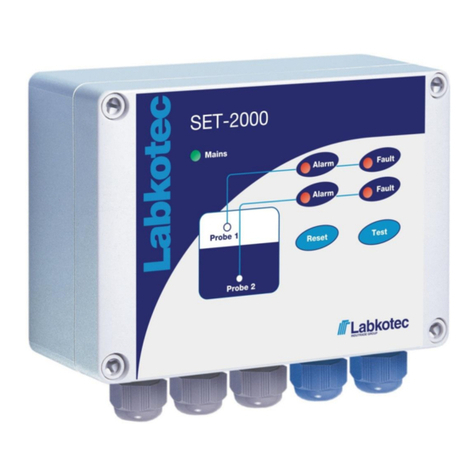SET-1000 D15233FE-2
Installation and Operating Instructions
Copyright © 2019 Labkotec Oy 5/14 We reserve the right for changes without notice
2.1 Cabling when using cable junction box
If the sensor cable must be extended or there is need for equipotential
grounding, it can be done with the cable junction box. The cabling
between the SET-1000 control unit and the junction box should be done
with a shielded twisted pair instrument cable.
LJB2 junction box enables cable extension in potentially explosive
atmospheres.
In examples in figure 4 the shields and excess wires have been
connected to the same point in galvanic contact with metallic frame of
the junction box. This point can be connected to equipotential ground
thru the ground terminal. Other components of the system that need to
be grounded can also be connected to the same ground terminal.
The wire used for equipotential grounding must be min. 2.5 mm²
mechanically protected or, when not protected, the minimum cross
section is 4 mm².
Please make sure, that the cable between SET-1000 and the sensor
does not exceed maximum connection values –see appendix 2.
Detailed cabling instructions can be found in the instructions of particular
Labkotec SET sensors.
Figure 4. Level sensor cabling with a junction box for cable
extension.
Junction box of type LJB2 include light alloy parts. When installing in
explosive atmosphere, make sure, that the junction box is located so,
that it can not be mechanically damaged or it will not be exposed to
external impacts, friction etc. causing ignition of sparks.




























